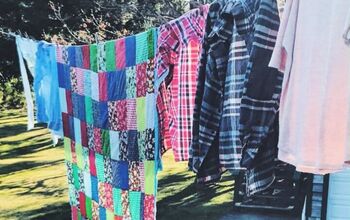Why We’d ALWAYS Buy a Top-Load Washing Machine Over A Front-Load
When shopping for a new washing machine, you're often confronted with one significant decision: front-loading or top-loading?
Both washer types have their benefits, but there’s a clear divide in terms of performance, efficiency, and user convenience.
In this article, we'll compare front-loading and top-loading washing machines and explain why the top-loading washing machine is our favorite of the two.
Table of contents
- 1. The basics: top vs front-load washing machine
- 2. Performance and cleaning efficiency
- 3. Water and energy usage
- 4. Cycle time and convenience
- 5. Maintenance and longevity
- 6. Price and long-term costs
- 7. Why we’d always buy a top-loading washing machine
- 8. Our recommendation
- Conclusion: Top vs front-load washing machine
Disclaimer: Simplify may receive a small affiliate commission from purchases made via links in this article but at no cost to you.
1. The basics: top vs front-load washing machine
Before diving into the details, let’s clarify what sets these two machines apart:
- Front-loading washing machines: Clothes are loaded through a door on the front of the machine. These washers typically use a tumbling action to clean clothes.
- Top-loading washing machines: Clothes are loaded from the top, and the washing is done by an agitator or impeller that spins the laundry in a water-filled tub.
2. Performance and cleaning efficiency
Front-loading machines generally excel in terms of performance and cleaning efficiency. Their horizontal drum design mimics the washboard effect, which leads to more thorough cleaning while being gentle on fabrics. They also spin faster, resulting in clothes that come out drier, reducing drying time.
By contrast, top-loading machines (especially those with agitators) can be harsher on clothes. However, the modern impeller-driven top-loaders have improved cleaning efficiency, offering better gentleness compared to agitator models.
3. Water and energy usage
If you’re environmentally conscious or want to save on utility bills, front-loaders win this category. These machines use significantly less water — sometimes up to 40% less than top-loaders. Since they use less water, they also require less energy to heat the water.
Top-loading machines, while improving in efficiency, still generally use more water. Models with agitators fill the tub entirely with water, leading to higher consumption.
However, high-efficiency (HE) top-loaders with impellers offer much better water and energy savings, coming close to the performance of front-loaders.
4. Cycle time and convenience
Top-loaders tend to have faster cycle times, often completing a load in around 30-40 minutes, whereas front-loaders may take up to an hour or more. This speed advantage makes top-loaders a good choice for busy households where turnarounds need to be quick.
When it comes to convenience, top-loaders are often more user-friendly, especially for those who don’t want to bend down to load and unload clothes due to sore backs or knees.
However, front-loaders can be stacked with a dryer, making them more space-efficient for smaller laundry rooms.
5. Maintenance and longevity
Front-loading machines can have one major drawback: maintenance.
These washers are prone to mold and mildew build-up around the door seal if not cleaned and dried regularly. It’s essential to leave the door open between loads to prevent moisture from trapping inside.
Top-loaders, on the other hand, don’t face this issue to the same degree since moisture tends to evaporate more easily. Generally, top-loading machines don’t need as much upkeep.
6. Price and long-term costs
As an upfront cost, top-loading machines tend to be more affordable than their front-loading counterparts.
Front-loaders come with a higher price tag.
Although, over time, the energy and water savings can offset the initial cost difference.
7. Why we’d always buy a top-loading machine
Top-loading washing machines excel in convenience and ease of use, making them a favorite for many households.
Their faster wash cycles are perfect for busy families, and the top-load design eliminates the need to bend over when loading or unloading laundry, which can be a huge benefit for those with mobility issues.
Additionally, top-loaders are typically more affordable upfront than front-loaders, making them a cost-effective option.
8. Our recommendation
The best top-load washing machine, in our opinion, is the Kenmore 20362 Triple Action Agitator Top-Load Washer offers excellent performance and reliability, making it a strong choice for budget-conscious buyers who don't want to compromise on cleaning power.
With its 3.8 cu. ft. capacity, it handles medium-sized loads with ease, perfect for smaller families or individuals. The standout feature is its Triple Action Agitator, which combines a powerful cleaning motion with advanced wash action to thoroughly clean clothes, even tough stains.
Additionally, it boasts a Deep Fill option, allowing you to add more water when needed, ensuring a customized clean for bulky or heavily soiled items.
Simple, effective, and durable, the Kenmore 20362 is designed for users who value straightforward functionality and consistent results at an affordable price point.
Kenmore 20362 Triple Action Agitator Top-Load Washer
Top vs front-load washing machine
Both front-loading and top-loading washing machines have their strengths. But we'll always opt for a top-loading washing machine such as the Kenmore 20362 Triple Action Washer.
Do you agree with our verdict? Comment down below.























Comments
Join the conversation